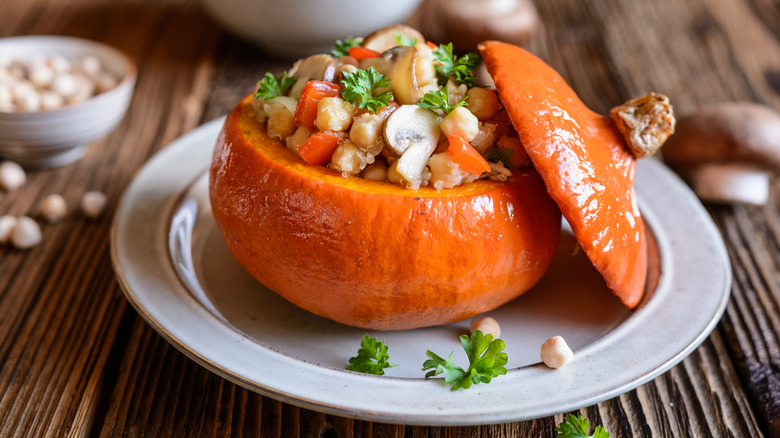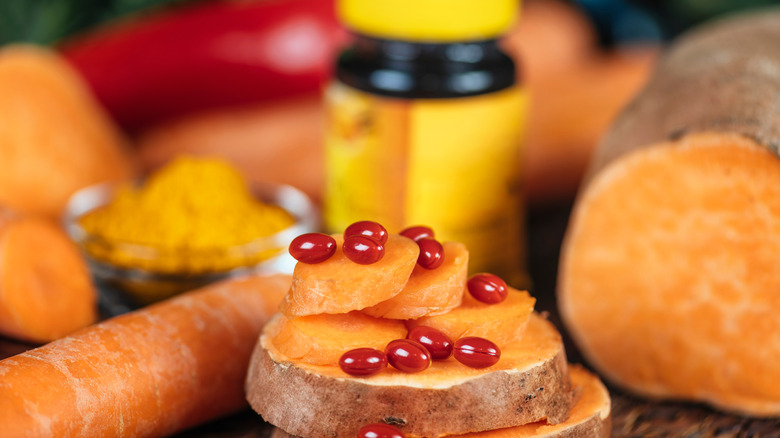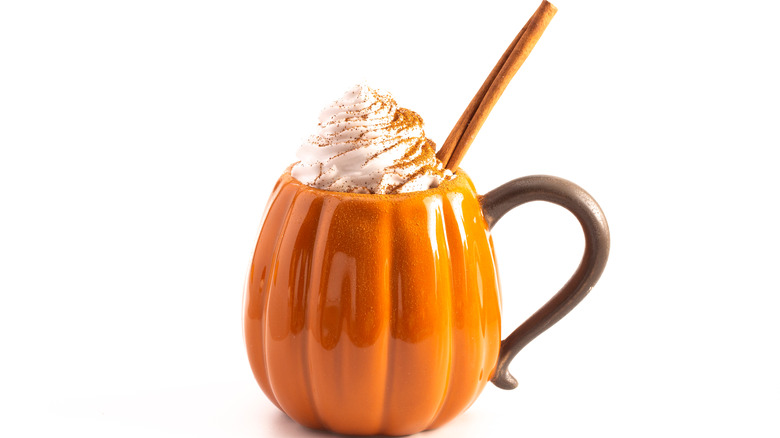Can Eating Too Much Pumpkin Really Turn Your Skin Orange?
Fall is here, which means it's time for all things pumpkin. Well, past time, if you go by the season-jumping marketers who keep scooching fall flavors forward to the point where we may soon be celebrating the 4thof July with All-American pumpkin pie ... which might actually not a bad idea, since according to the University of Missouri, pumpkins are native to the Americas.
Pumpkin is incredibly healthy, to the point where it could be considered a part of the ever-expanding pantheon of superfoods. This vegetable has vitamins and minerals out the wazoo, not to mention fiber, so that should mean you can just go to town on all the pumpkin things without having to feel even a teensy bit guilty, right? Not so fast!
Not only do most pumpkin dishes include ingredients like cream, butter, sugar, pie crust, pasta, etc., but even if you stick to just plain pumpkin, there's a significant side effect that could have you looking like a circus peanut should you overindulge in this maybe slightly-less-than-super food. Dr. Nicole Avena, a research neuroscientist and nutrition consultant who authored the book "Why Diets Fail," confirmed the truth behind the rumor: yes, eating a lot of pumpkin really can make your skin turn orange. But how much is too much?
Blame it on the beta carotene
As Avena explains it, pumpkins can cause your skin to take on an orangey hue because they are loaded with the pigment known as beta carotene. Pumpkin isn't the only food that can turn your skin orange, since carrots and sweet potatoes are also loaded with the stuff. Eating a whole bunch of this nutrient "can cause a condition known as carotenemia, which is when your skin may start to turn orange due to the buildup of beta-carotene in your body," Avena cautions. "It's not common, as you need to eat about 20 to 50 mg of beta carotene a day for a few weeks to see a change in skin color, but it does happen!"
As for how much pumpkin is too much, Avena says that you need to eat 20 mg of beta carotene a day for several weeks in order for your skin to take on the dreaded orange hue. This is the amount you'd get from eating approximately 1 ¼ cups of canned pumpkin. She does say, though, that the amount of pumpkin it takes to cause skin to change color can vary depending on the person, telling us "Those with lighter skin will see discoloration more easily." Thankfully, this effect isn't permanent. "You can slowly get your skin color back to normal in a few months," Avena says, you just need to dial back on the beta carotene consumption.
Other pumpkin products won't cause discoloration
If you're in a panic about your PSL habit, no need to worry! While the Starbucks version does contain a teensy amount of pumpkin puree, there's barely a hint of beta carotene in that beverage. Other pumpkin spice-flavored drinks, snacks, canned meat products, et cetera may contain no pumpkin whatsoever, just cinnamon, ginger, nutmeg, and cloves (or synthetic versions thereof). As Avena tells us, most pumpkin spice products should be pretty safe. "Pumpkin spice flavoring doesn't contain pumpkin, but rather a mixture of spices that give us the aroma of pumpkin. Some pumpkin spice syrups may contain traces of pumpkin, but not enough to do any damage," she explains.
Avena does have a warning about one additional part of the pumpkin: its seeds. "You may want to make sure to enjoy [pumpkin seeds] in moderation as they are high in fat and thus high in calories," she notes. Of course, as VeryWell Fit points out, the fats these seeds contain are of the healthy monounsaturated and polyunsaturated variety, and if you roast the seeds yourself in olive oil, they, too, can make for a super-nutritious, high-fiber, high-protein treat.


